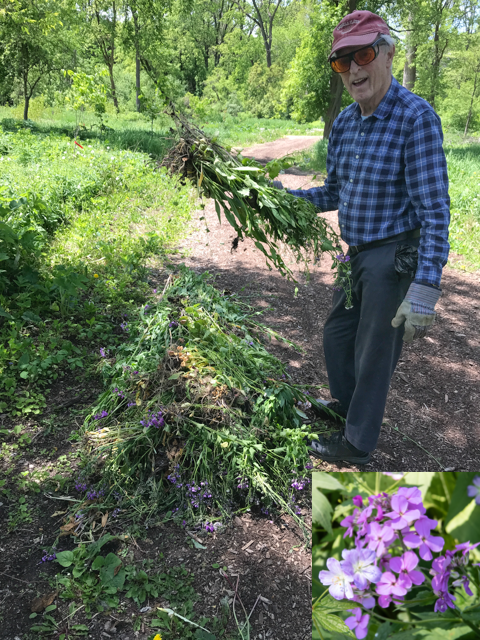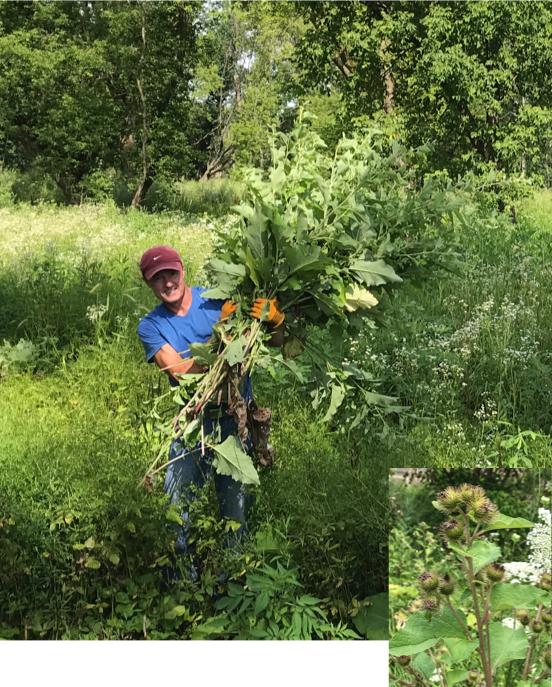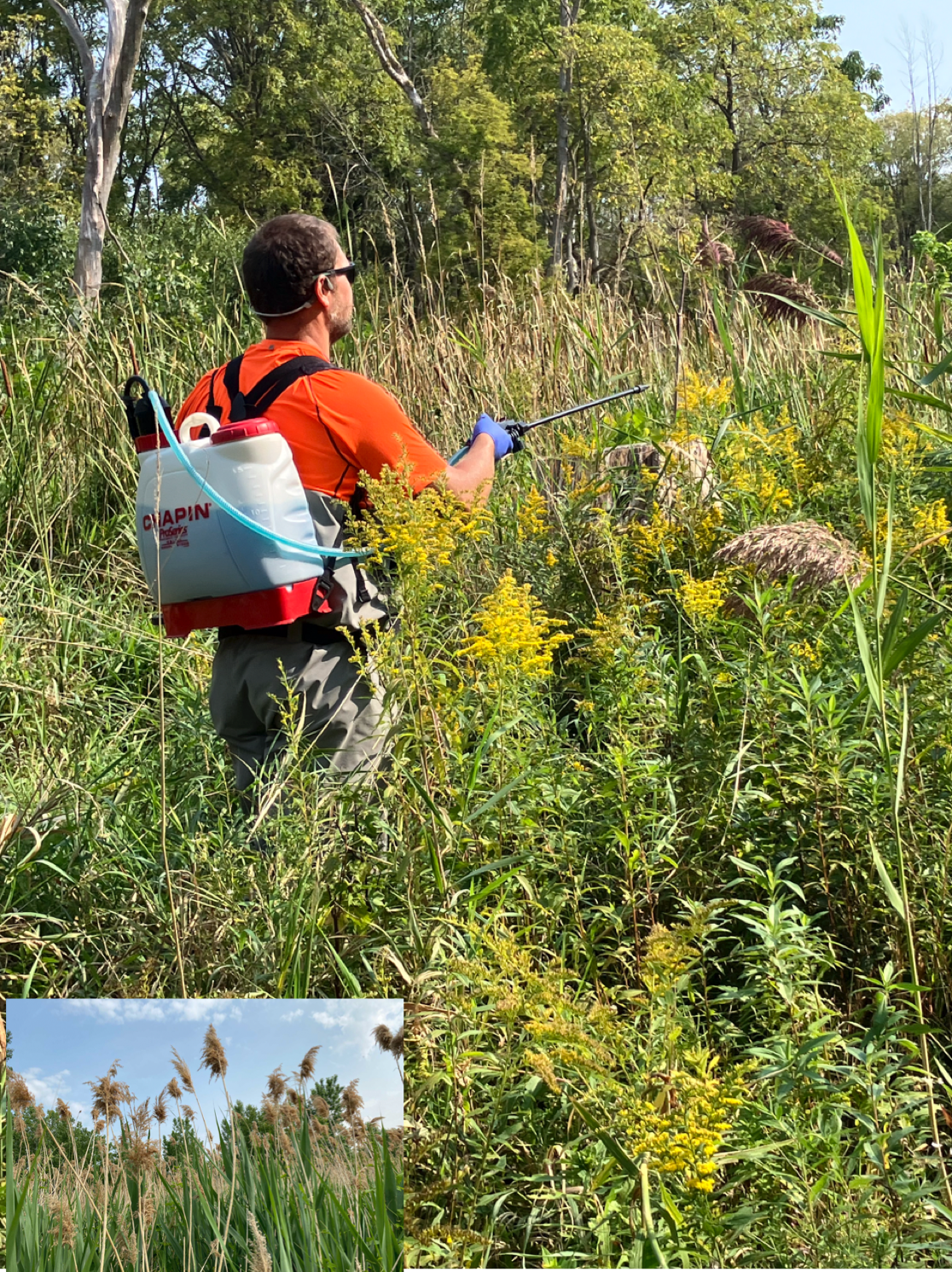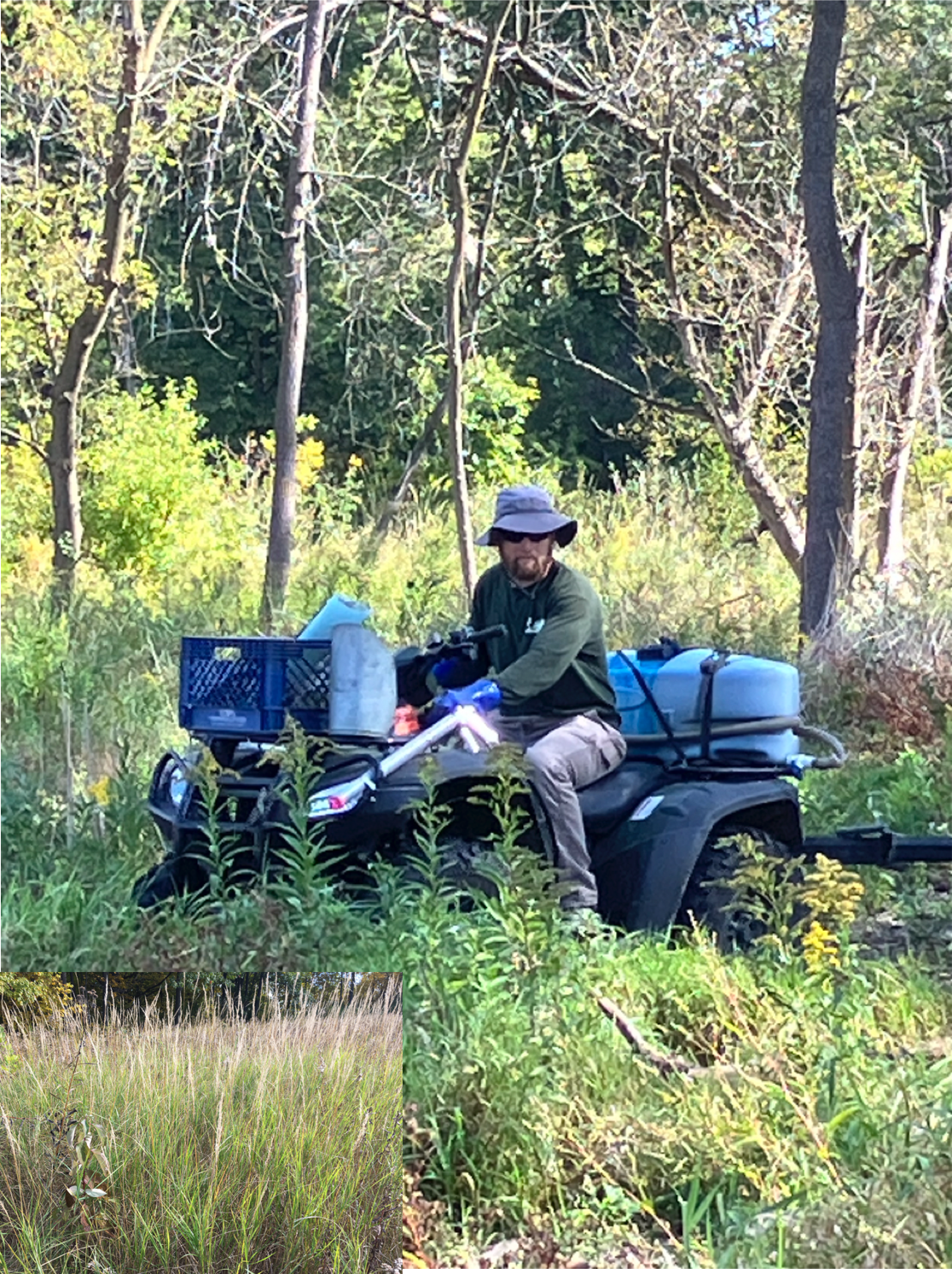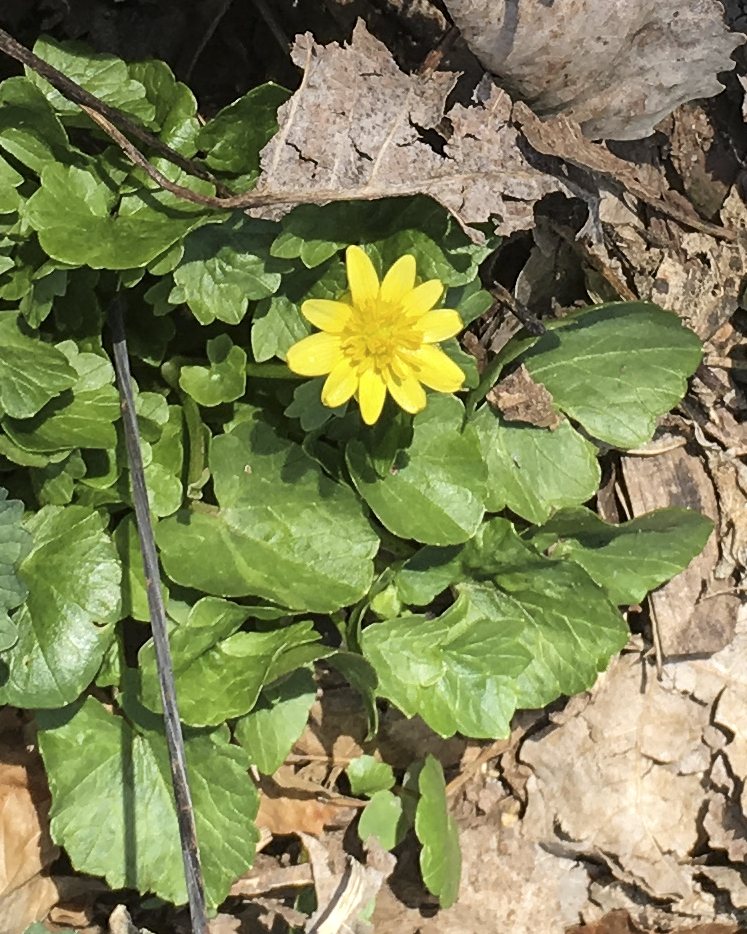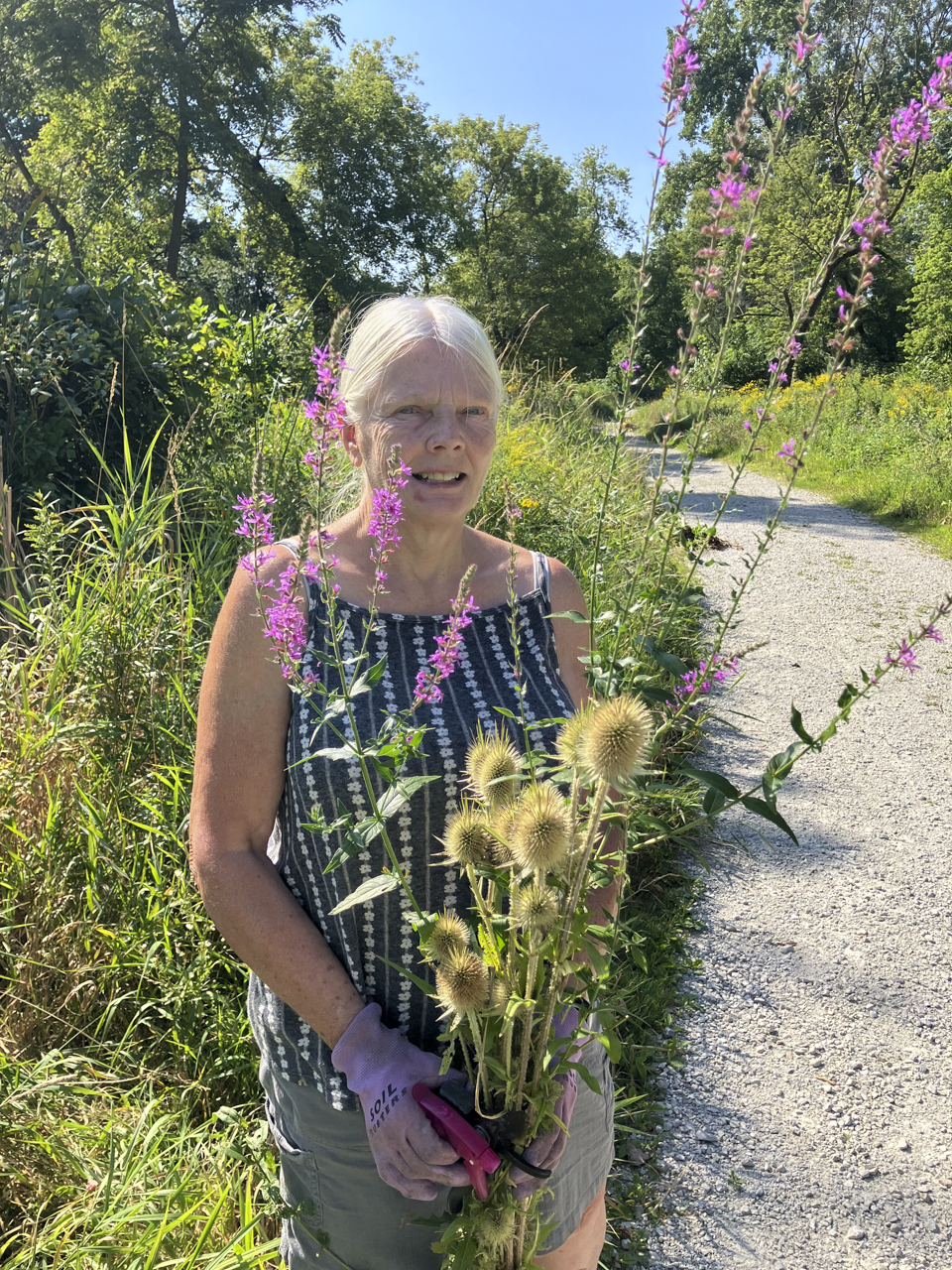Buckthorn
Buckthorn shades out native shrubs and trees through its rapid growth.
Buckthorn is controlled by cutting, removal and herbicide on stumps almost any time of year.
Honeysuckle
Honeysuckle makes thick clumps that shade the ground, preventing native growth. No native plants mean no native insects, so less food for birds and fish.
Honeysuckle is controlled by cutting and glyphosate on the stumps.
Garlic mustard
Garlic mustard grows almost all year round. It chemically suppresses seedling trees, takes over forests. It is not desirable food for critters.
Garlic mustard is usually removed by pulling the whole plant out by the roots, and putting the plants into trash bags marked "DO NOT COMPOST." It has to be removed before it goes to seed.

